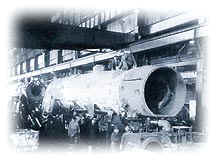![]()
- What is Asbestos?
- Where can Asbestos be Found?
- How Might I Have Been Exposed to Asbestos?
- What if I did not Work Around Asbestos?
- What are Some of the Dangers Associated with Asbestos Exposure?
- How Long Does it Take for an Asbestos Related Disease to Appear?
- Is There a Medical Test to Determine if I Have Been Exposed?
- If I Have an Asbestos Related Disease How Can I Obtain Compensation?
The term asbestos refers to asbestos fibers have been woven into the cloth family of six naturally occurring silicate minerals (amosite, chrysotile, tremolite, actinolite, anthophyllite, and crocidolite). These minerals have a unique fibrous structure that appears somewhat similar to fiberglass. Moreover, these fibers are very strong and are extremely resistant to heat and corrosive chemicals. Chrysotile, which is white in color, is the most commonly used type of asbestos, accounting for nearly 90% of the asbestos consumed. Two other commonly used types of asbestos are Amosite (brown and off-white) and Crocidolite (blue).
Although the insulation qualities of asbestos have been recognized for thousands of years, it was not until the industrial revolution in the 1800s that asbestos use became widespread. Asbestos fibers have been used in a wide range of products ranging from a mud or paste to ceramic like tiles. Asbestos fibers have even been woven into a cloth. Similarly, asbestos products have been used in a wide range of applications including pipe insulation, boiler insulation, wall and ceiling insulation, ceiling tiles, floor tiles, roofing shingles and brake pads and clutch linings, to mention a few.
How Might I Have Been Exposed to Asbestos?
 Exposure
to asbestos fibers can result from working with or around asbestos-containing products
such as pipe and boiler insulation, fireproofing, plasters, acoustical plasters and
ceiling tile, floor tile, sheet rock, joint compound, joint tape and gaskets, friction
products (e.g., automotive brakes and clutch materials), and many others. Although the
federal government has prescribed certain exposure limits, there is no such thing as safe
exposure to asbestos. As a result, any activity, occupational or otherwise, that disturbs
asbestos-containing materials and produces airborne dust is likely to lead to inhalation
by those exposed to the dust. More importantly, most asbestos fibers are smaller than can
be detected by the unaided human eye, thereby undermining the ability of workers to judge
the degree of hazard present without the use of specialized measuring instruments, like
electron microscopes.
Exposure
to asbestos fibers can result from working with or around asbestos-containing products
such as pipe and boiler insulation, fireproofing, plasters, acoustical plasters and
ceiling tile, floor tile, sheet rock, joint compound, joint tape and gaskets, friction
products (e.g., automotive brakes and clutch materials), and many others. Although the
federal government has prescribed certain exposure limits, there is no such thing as safe
exposure to asbestos. As a result, any activity, occupational or otherwise, that disturbs
asbestos-containing materials and produces airborne dust is likely to lead to inhalation
by those exposed to the dust. More importantly, most asbestos fibers are smaller than can
be detected by the unaided human eye, thereby undermining the ability of workers to judge
the degree of hazard present without the use of specialized measuring instruments, like
electron microscopes.
 Railroad
workers who often came into contact with asbestos-containing products include: Machinists,
Boilermakers, Blacksmiths, Welders, Tinners, Sheetmetal Workers, Pipefitters,
Locomotive Engineers, Firemen & Oilers, Brakemen, Conductors, Carman, Electricians and
all other workers who may have worked in and around asbestos.
Railroad
workers who often came into contact with asbestos-containing products include: Machinists,
Boilermakers, Blacksmiths, Welders, Tinners, Sheetmetal Workers, Pipefitters,
Locomotive Engineers, Firemen & Oilers, Brakemen, Conductors, Carman, Electricians and
all other workers who may have worked in and around asbestos.
What if I Did Not Work Around Asbestos?
 Although
it is generally held that the greater the exposure to asbestos, the greater the risk of
developing an asbestos-related disease, that is not always the case. There have been
numerous documented cases of persons who did not knowingly work with asbestos, who have
developed asbestos-related diseases. Unfortunately, those individuals often include
housewives and other family members of workers who were exposed to asbestos. Similarly,
residents of neighborhoods in the vicinity of factories or railroad shops where asbestos
was regular used run a significantly higher chance of contracting an asbestos related
illness. Ironically, while these individuals often lack sufficient exposure levels to
produce the milder forms of asbestos related illness, they often develop much more lethal
diseases such as lung cancer and mesothelioma—a particularly lethal form of lung
cancer which has been directly linked to asbestos exposure.
Although
it is generally held that the greater the exposure to asbestos, the greater the risk of
developing an asbestos-related disease, that is not always the case. There have been
numerous documented cases of persons who did not knowingly work with asbestos, who have
developed asbestos-related diseases. Unfortunately, those individuals often include
housewives and other family members of workers who were exposed to asbestos. Similarly,
residents of neighborhoods in the vicinity of factories or railroad shops where asbestos
was regular used run a significantly higher chance of contracting an asbestos related
illness. Ironically, while these individuals often lack sufficient exposure levels to
produce the milder forms of asbestos related illness, they often develop much more lethal
diseases such as lung cancer and mesothelioma—a particularly lethal form of lung
cancer which has been directly linked to asbestos exposure.
What Are Some of the Dangers Associated with Asbestos Exposure?
 Airborne
asbestos fibers become incorporated into the human body through inhalation of
fiber-containing dust into the lungs, or by ingestion via the mouth. Similarly, because
asbestos does not dissolve in water, fibers can enter water by being eroded from natural
deposits or piles of waste asbestos, or from asbestos cement pipes used to carry drinking
water. Because asbestos fibers are so resistant to heat and chemicals, they are not easily
dissolved or broken down. As a result, once inhaled or ingested, asbestos fibers often
remain in the body and can cause a multitude of medical problems.
Airborne
asbestos fibers become incorporated into the human body through inhalation of
fiber-containing dust into the lungs, or by ingestion via the mouth. Similarly, because
asbestos does not dissolve in water, fibers can enter water by being eroded from natural
deposits or piles of waste asbestos, or from asbestos cement pipes used to carry drinking
water. Because asbestos fibers are so resistant to heat and chemicals, they are not easily
dissolved or broken down. As a result, once inhaled or ingested, asbestos fibers often
remain in the body and can cause a multitude of medical problems.
Exposure to asbestos has been conclusively demonstrated to cause a spectrum of human diseases, including asbestosis, lung cancer, Mesothelioma (cancer of the lining of the chest or abdominal cavity) and several other types of cancer. The link between certain diseases and asbestos exposure has been observed in a wide variety of occupational groups and in many different work settings around the world.
 In
addition to causing cancer, breathing asbestos can also cause asbestosis—a slow
accumulation of scar-like tissue in the lungs and in the covering of the lungs called the
pleura. This scar-like tissue does not expand and contract like normal lung tissue, and so
breathing becomes difficult. Blood flow to the lung may also be decreased, and this causes
the heart to enlarge causing a disease known as cor pulmonale. Asbestosis is a serious,
progressive and incurable disease that can eventually lead to disability or death.
Asbestos exposure can also cause another non-malignant condition known as pleural disease
(pleural thickening, pleural plaque and pleural calcification). Advanced pleural
thickening has been shown to cause lung dysfunction and disability.
In
addition to causing cancer, breathing asbestos can also cause asbestosis—a slow
accumulation of scar-like tissue in the lungs and in the covering of the lungs called the
pleura. This scar-like tissue does not expand and contract like normal lung tissue, and so
breathing becomes difficult. Blood flow to the lung may also be decreased, and this causes
the heart to enlarge causing a disease known as cor pulmonale. Asbestosis is a serious,
progressive and incurable disease that can eventually lead to disability or death.
Asbestos exposure can also cause another non-malignant condition known as pleural disease
(pleural thickening, pleural plaque and pleural calcification). Advanced pleural
thickening has been shown to cause lung dysfunction and disability.
How Long Does it Take for an Asbestos Related Disease to Appear?
 Several
key concepts characterize the relationship between asbestos and disease. Latency means
that signs of asbestos exposure (e.g., pleural plaques) usually do not begin to be seen
until ten years after first exposure and that longer time intervals may pass between the
onset of exposure to asbestos and the development of other asbestos-associated diseases.
Often asbestos-induced disease does not appear until more than 30 years have elapsed from
the time of first (but necessarily continuing) asbestos exposure.
Several
key concepts characterize the relationship between asbestos and disease. Latency means
that signs of asbestos exposure (e.g., pleural plaques) usually do not begin to be seen
until ten years after first exposure and that longer time intervals may pass between the
onset of exposure to asbestos and the development of other asbestos-associated diseases.
Often asbestos-induced disease does not appear until more than 30 years have elapsed from
the time of first (but necessarily continuing) asbestos exposure.
As a result, a person exposed to asbestos and who later develops asbestos-related disease will initially have no symptoms. Similarly, a dose-response relationship generally exists, meaning that the risk of disease normally increases with increased exposure. Finally, for asbestos-induced cancer, the commonly held "no safe threshold principle" asserts that no level of exposure has been demonstrated below which asbestos-induced cancer cannot occur, i.e., that no safe level of asbestos exposure has been documented.
Is There a Medical Test to Determine if I Have an Asbestos Related Disease?
The most common test used to determine if you have been affected by asbestos is a chest x-ray. The x-ray cannot detect the asbestos fibers themselves, but can detect early signs of lung disease caused by asbestos. While other things besides asbestos can sometimes produce similar changes in the lungs, this test is usually reliable for detecting asbestos-related effects.
It is also possible to test for the presence of asbestos fibers in urine, material rinsed out of the lung by a doctor, or other body tissues. Higher-than-average levels can show that you have been exposed to asbestos, but it is not yet possible to use the results to estimate how much asbestos you have been exposed to, or to predict whether you are likely to suffer any health effects.
How Can I Obtain Compensation for an Asbestos Related Disease?
Traditional legal remedies continue to be available including: (1) a claim or lawsuit against your former railroad employer if you worked for the railroad; and (2) a lawsuit or claim against the manufacturers of the asbestos-containing products to which you were exposed. The FELA provides a legal remedy that is available only to railroad employees. As a railroad employee or retiree, you cannot avail yourself of Worker’s Compensation, but must file a case against your former railroad employer in the court system.
Although several companies such as Johns-Manville and Celotex, had to declare bankruptcy because of the number of claims filed against them, the American public continues to pay the ultimate price. A large portion of the workers who were exposed to asbestos during the 1950s and 1960s are just now entering their prime risk years. Also, many people afflicted with asbestos-related diseases remain undiagnosed and unaware of their legal rights. Despite this, several companies, including large insurance companies are currently seeking federal legislation that will prevent or curtail individuals from pursuing claims for asbestos related illnesses.
In the event that you or someone you know has been injured as a result of exposure to asbestos, contact the law firm of Jones Granger at 1-800-231-3359 to discuss your rights under the law.
10000 Memorial Drive
P.O. Box 4340 Houston TX 77210
Office: 713.668.0230 - Toll Free: 800.231.3359
Fax: 713.956.7139
©2009, Jones, Granger, Tramuto, & Halstead, Attorney at Law, All Rights Reserved.